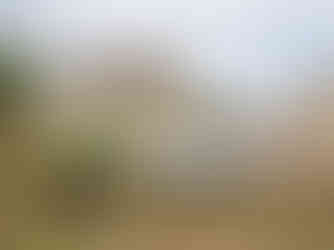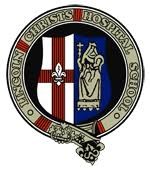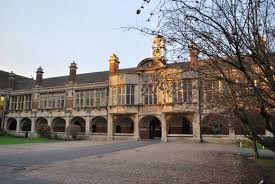Newsletter - Autumn 2020
- Friends Of The Cathedral

- Feb 28, 2022
- 10 min read
Updated: Mar 26
Welcome to this addition of the Friends’ newsletter. Strange Times! Perhaps this ought to be
the title of this newsletter. As I write, the impact of the covid pandemic on society and our Association is becoming ever more severe and Christmas 2020 seems an unknown and, for many, a worrying quantity.

Our Association’s normal programme of events has been decimated since last March and there is no knowing when ‘normal service’ will resume. However, unless further restrictions come into force, we are hoping that ‘Carols by Candlelight’ will go ahead, albeit in a limited form (see below). Our Annual General Meeting last June was cancelled, as was the proposed visit to Sandringham, also in June.
We were able to hold two teatime talks last February, which were well attended, but the annual
reception for new members and our council meetings did not take place. There has been a recent
meeting of the executive committee of the Friends’ Council, where we have been able to welcome the
return of the Dean as our Chair. (see below) We are indebted to the SubDean, Canon John Patrick,
for undertaking the Chair’s role during her absence, and the Council has appreciated his skill,
sensitivity and sense of humour during this time. One item of good news is the completion of the Old
Deanery Visitors’ Centre Project, and we look forward to making use of these facilities for our
meetings and events, when they will be officially opened next year. The Dean’s Green area, which is
now open daily to the public has certainly been an amazing transformation .
The Friends’ 2020 Christmas card

This year’s image is a striking view of the West Front of the cathedral, taken by Verger Jim Newton, showing off the new floodlighting system to great effect. It is available in only one size, as sales of our larger cards have been disappointing over the last few years. Cards can be ordered by post, using the enclosed order form, which is also available on the Friends’ website. Prices for members are 40p per card - or a packet of 10 at 4.00, plus postage and packing. We have included the words ’Comfort and Joy,’ as being particularly appropriate for this year. We hope to continue selling cards from the Friends’ office and in the Cathedral shop from the beginning of December.
The Friends’ Annual Carols by Candlelight Concert

Planning for this event is taking place, although there is a real possibility that further restrictions may lead to its cancellation. At present, the concert is scheduled to take place on the two evenings of Tuesday 15th and Wednesday 16th December at 7.30 pm. The size of the audience will be limited to approximately 250 on each evening and the tickets will be priced at 20, or 15 with restricted view. Refreshments will not be available and strict social distancing will be observed. One of the concerts will be streamed online without cost, although there will be a facility to make online donations to the Friends. Regrettably, in order to satisfy track and trace regulations and to facilitate refunds if the concerts have to be cancelled, tickets will only be available for purchase through the cathedral’s website, using Eventbrite. They will not be on sale from either the cathedral shop or our office, or at the door on each evening. Tickets will be on sale from 15th November. Seats will be arranged in pairs, although a limited number of single seats will be available. Whilst these arrangements will inconvenience members we would emphasize that they have been put in place purely because of the pandemic and will certainly not be the norm in future years. An attractive musical programme, including an entertaining interlude, has been planned and we feel sure that this will appeal to everybody, however they manage to access it!
A report from the meeting of the Executive Committee of the Friends’ Council
Although the AGM and Council meetings had been cancelled, due to covid restrictions, the executive
committee had met as a group of six to review Council business. The committee took responsibility
for discussing as much of the usual AGM agenda as possible. All officers and members of the
Council would remain in post until elections at the next Annual General Meeting, which had been
arranged for Saturday, 19th June 2021 at 2.00 p.m.. The discretionary fund and the organ sinking fund
would continue. No Friends’ choral scholar had been appointed because of the pandemic, but support
for the Friends’ apprentice stonemason would continue, in conjunction with the Heritage Skills Fund.
The Treasurer presented the draft annual reports, which would be returned to the accountants for final
preparation before ratification. The accounts had been delayed extensively by staff being furloughed
and a replacement employee had only recently been able to begin work on them. The Membership
secretary reported that current annual membership stood at 1245, of which 585 were Life Members.
Three substantial legacies had been received. A number of requests for grants were agreed,
including 3000 to support PPE requirements in the cathedral, 527 to purchase hoodies for the choir
children and 1593 to purchase music stands to allow the choir to perform whilst keeping socially
distanced. The choir children had been measured for new cassocks, which when ordered would be
the same colour as those being replaced. The Friends would consider how they might best support
this in due course, if asked. The flower fund grant increase to 2000 had not been needed, as very
few floral arrangements had been completed. A new Patron still needed to be appointed
Forthcoming events:
Tuesday 15th & Wednesday 16th December at 7.30 pm. Carols by Candlelight in the Cathedral Nave
Saturday 19th June 2021 at 2.00 pm. Annual General Meeting Venue TBC
Guest Article. Robert Jones
Robert Jones is a member of our Association who spends his retirement living
in Switzerland. He has since rediscovered a love of Latin and has sent in this article about the Latin
hymn that he was required to sing every year on St Hugh’s Day, whilst attending Lincoln Grammar
School (now Lincoln Christ’s Hospital School.) I am indebted to Robert for his work and am pleased
to be able to include his article in this Autumn newsletter. It is always a pleasure to receive
contributions from members for inclusion in our newsletters, when space permits.
NB A photograph of the contributor is obligatory!
I joined Lincoln School (now Lincoln Christ's Hospital School) as a boarder

in September 1959. At morning assembly on 17 November of that year, instead of a hymn from the normal Oxford Songs of Praise hymn book, a cyclostyled Latin text was put into our hands which we were then required to sing. This was in honour of Saint Hugh, who was bishop of Lincoln from 1186 until his death in 1200. (Not to be confused with Hugh of Lincoln (1246 - 1255)) Although marking Saint Hugh's Day in this manner was traditional at the school for many years until it was discontinued in 1971, I do not recall any translation or interpretation of the hymn having been given.
Under the tutelage of Rev. R P Baker and others I gained a pass in Latin at GCE O Level but for A Levels moved over to what was then called the Modern side of the sixth form to study mathematics and physics. However, now in retirement I have rekindled my latent interest in Latin and, while studying for GCE A Level, have felt challenged to understand, and attempt a translation of, Est Hugo de Burgundia. The text of the eight-verse hymn is as follows:
Est Hugo de Burgundia, Excelsa Christi gratia Sublimatus in Anglia Pontificatus infula.
Humo plasmatus arida Irroratur a rea Humiditate, frigida Ardet natura ignea.
Vitae sanctae principiis Mortis versis mellifluis Hugonis sine dubio Est simplex generatio.
Gloriam summis hic figens, Fictam imis reperiens Carthusiensem ordinum Subegit mox asperrimum.
Aeterna Christi munera Hugo figens memoria Leprosis dedit oscula Et sensit illa dulcia.
Odas canunt altissimo Assumpto ab exsilio Hugone cives superi Ad asylum Dei veri.
Superna ergo procura Nobis prece continua Nunc apud qui te Dominum Fecit postorem gentium.
Tibi patri, Deo vero, Laus, honor sit et filio Cum spiritu paraclito Finem iungens principio.
We sang the text to the melody Aeterna Christi munera, which is today the tune of the hymn The eternal gifts of Christ the King. It will be noted that the words Aeterna Christi munera also appear in the first line of verse 5 of Est Hugo. The Latin hymn Aeterna Christi munera is attributed to Aurelius Ambrosius (c. 340 - 397), better known as Ambrose, who became Bishop of Milan in 374 and is today the city's patron saint. The melody is one of the Gregorian plainsong chants which were collected into the Directorium Chori by the Italian priest Giovanni Guidetti (1532 - 1592) under the supervision of the notable Renaissance composer Giovanni Pierluigi da Palestrina (1525 - 1594) and published in 1582. ).According to a handwritten copy of the text contained in the Lincoln School archives, Est Hugo was written by William of Wheatley, who was headmaster of the school in 1316. Under the title De s. Hugone Lincolniensi Ep. ('Concerning Saint Hugh, Bishop of Lincoln') it is contained in the collection of medieval Latin hymns entitled Analecta Hymnica Medii Aevi LII published at Leipzig in 1909. There, in a footnote, the 'previously unknown' hymn is stated to have been copied by Rev. H M Bannister from a manuscript held in the possession of New College, Oxford. It has been confirmed that the manuscript is still present in New College library and photographic copies have been deposited in the school archives. Under what circumstances and by whom the hymn was introduced into Lincoln School has not been
ascertained but may possibly be documented elsewhere in the school archives.
Translation of Est Hugo has turned out to be a highly challenging exercise. The meaning of some of the

Latin is obscure, as has been independently confirmed by two Latin teachers, one in England, one in Switzerland. Its interpretation would require detailed knowledge of Saint Hugh's life. Taking just the first verse as an example, it is interesting to note that the first word est grammatically belongs not there but as the last word of the verse, to make up the perfect passive tense sublimatus est of the verb sublimare, 'to elevate': Hugh was elevated, or promoted, to his eccelesiastical office in England. Since Latin allows almost unlimited freedom in the placement of words, est was moved

to its position as first word to achieve the rhyming a at the end of all four lines. It also lends the first four words Est Hugo de Burgundia the intuitive, but false, meaning of 'It is Hugh of Burgundy'. Also in the first verse, as pointed out in a footnote in the Analecta Hymnica, there is uncertainty as to whether the last word is infula, as given here, or insula. Infula means a bishop's mitre and can be interpreted as a reference to Hugh's elevation to this office. Insula, on the other hand, means 'island' and can be understood to refer to Hugh's transfer from his native country of France to the island of Anglia, England. There are further nuances and uncertainties of interpretation in other verses.
In Praise of Saint Hugh, Bishop of Lincoln
Through the sublime goodness of Christ, Hugh of Burgundy was elevated to England with the priestly insignia of a bishop.
Made from dry earth moistened by the humidity of the air, his nature burns with cool fire (obscure).
At the start of Hugh's holy life is without doubt a simple generation and in death sweet verse (obscure).
He soon enters the lowest level of the strict Carthusian order, to which highest renown is attached.
Mindful of the eternal duties of Christ, Hugh gave kisses to lepers and felt their sweetness.
After Hugh was taken from his highest exile into the care of the (one) true God, the most noble people sang his praise.
Therefore now our unceasing prayers that he with thee whom the Lord has made shepherd of his peoples may care for us.
Praise and honour be to thee, father, the one true God, and to thy son, who with the holy ghost as protector joins the beginning to the end.
Hugh was born between 1135 and 1140 at the chateau of Avalon, France, the son of Guillaume, seigneur of Avalon. His mother died when he was eight and, because his father was a soldier, he was sent to a boarding school for his education. At the age of fifteen, Hugh became a religious novice and was ordained a deacon at the age of nineteen. In about 1159 he was already sent to be prior of the nearby monastery at Saint Maximin, which he subsequently left to enter the Carthusian order at the Monastery of the Grande Chartreuse, then at the height of its reputation for the rigid austerity of its rules and the earnest piety of its members. From there, he was sent in 1179 to become prior of the Witham Charterhouse in Somerset, the first Carthusian house in England. King Henry II, as part of his penance for the murder of Thomas Becket, had established the Carthusian house some time before, which was settled by monks brought over from the Grande Chartreuse. It was by the special request of the English king that Saint Hugh, whose fame had reached him through one of the nobles of Maurienne, was made prior. Hugh was consecrated Bishop of Lincoln at Westminster on 21 September 1186. As a bishop, he was exemplary, constantly in residence or travelling within his diocese, generous with his charity, scrupulous in the appointments he made. He raised the quality of education at the cathedral school. Hugh was also prominent in trying to protect the Jews, great numbers of whom lived in Lincoln, in the persecution they suffered at the beginning of Richard I's reign. Lincoln Cathedral had been badly damaged by an earthquake in 1185 and Hugh set about rebuilding and greatly enlarging it in the new Gothic style. As one of the premier bishops of the Kingdom of England, Hugh more than once accepted the role of diplomat to France for Richard and then for King John in 1199, a trip that ruined his health. While attending a national council in London after his return, he was stricken with an unnamed ailment and died two months later on 16 November 1200. He was buried in Lincoln Cathedral. Such was his fame that his funeral was attended by the primate of all England, 14 bishops, 100 abbots, an archbishop from Ireland and another from Dalmatia, Gruffydd ap Rhys from south Wales, King William the Lion of Scotland, and King John of England:
Robert Jones attended Lincoln
School 1959-1964
Lincoln Christ’s Hospital school badge
Odas canunt altissimo
Assumpto ab exsilio
Hugone cives superi
Ad asylum Dei veri.
Copyright the Friends of Lincoln Cathedral. Compiled by Michael Belcher and printed by APS Printers, Lincoln
















Autocorrect error ! The word 'PERIOD' was altered to 'person'. My apologies.
I read this article with interest as I attended the Lincoln School at the same time as the author. My Latin is is now so rusty as to be non existent. I was taught the subject by one of the other Masters, a Mr C R I Mattheson. My only reason for commenting is that the author states that a translation was not given to pupils. While that may well have generally been the case, in my first year, 1957, Mr Mattheson did devote one person to the translation of the hymn. After this time I cannot remember how close that translation may have been to that in the article.
Nigel Eborall